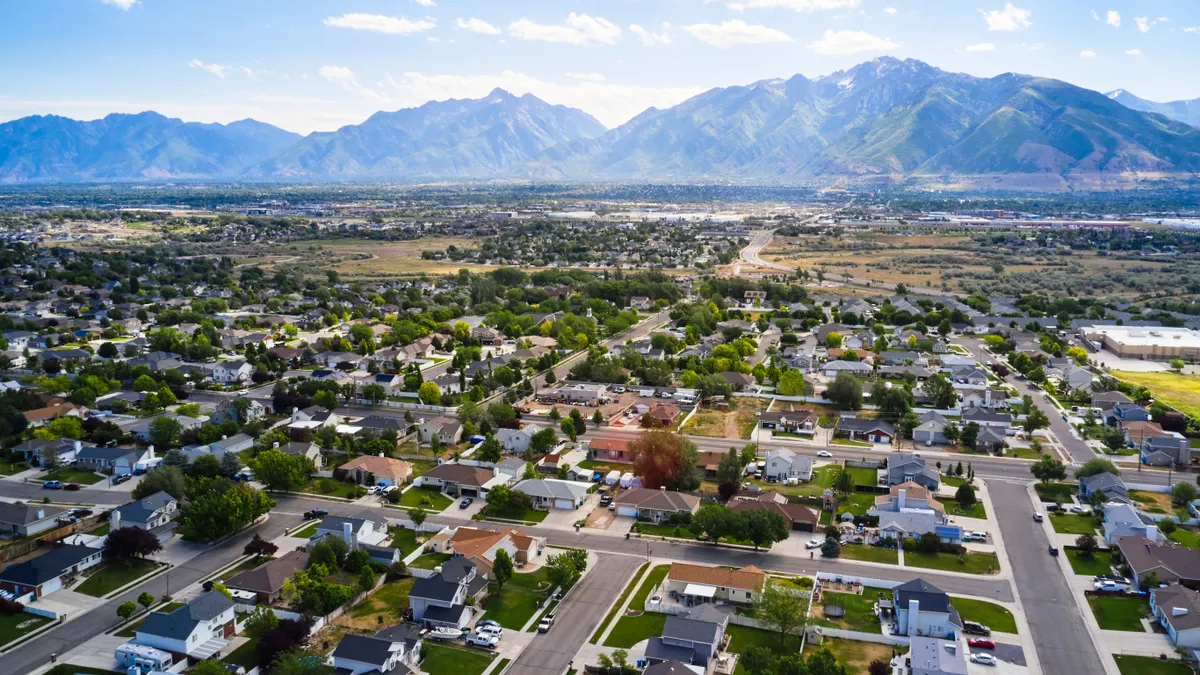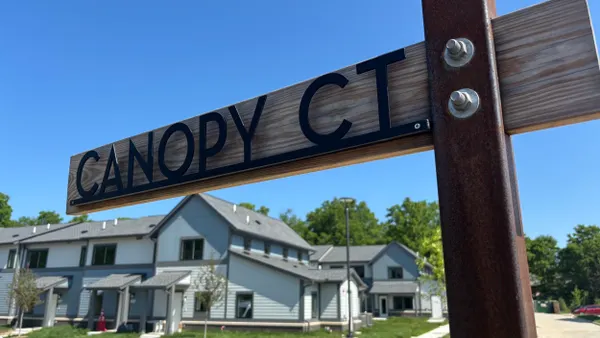Dive Brief:
- Zoning changes can accelerate public- and private-sector developments that advance community objectives such as greater sustainability, resilience and inclusivity, according to a new report from the Urban Land Institute and Smart Growth America.
- The report gives more than a dozen examples of zoning changes cities have made recently to achieve public policy goals, from complete comprehensive overhauls of codes to offering tools or incentives that entice developers to provide certain public benefits into their projects.
- Despite the need for reform, making changes to zoning can be “politically challenging and time-consuming,” said Matt Norris, senior director of the Urban Land Institute’s Building Healthy Places Initiative, in an email. Success can come from “public outreach efforts that use creative communication techniques to focus on quality-of-life benefits to build local buy-in.”
Dive Insight:
There has been growing momentum among U.S. cities grappling with the housing crisis to alter zoning codes to allow the construction of more multifamily and affordable housing developments. Arlington County, Virginia, and St. Petersburg, Florida, are two of the most recent communities to allow developers to build multifamily housing on single-family lots in some circumstances.
According to the report, zoning restrictions such as those that only allow single-family homes in certain neighborhoods or require a minimum number of parking spaces often have not been updated in decades. Those requirements “often promote negative outcomes for cities, people and communities,” the report states.
Policies such as those have led to development patterns that have increased traffic, contributed to air pollution, raised housing costs and reduced walkability, the report states. They also have contributed to “the creation and perpetuation of racially and economically segregated communities,” the report states, leading to inequities around access to parks and affordable housing as well as economic mobility.
Cities “can use zoning to set the stage for accelerated public- and private-sector investment in development projects that advance essential community objectives," Norris said.
Among the techniques that cities have used to update their zoning the report identifies include:
- Complete comprehensive overhauls of codes.
- By-right zoning that allows projects that comply with certain standards to obtain building permits and approval through eased administrative processes.
- Overlays or special districts placed over zoning districts and include provisions, such as wetland or historic building protections, in addition to the conditions already present.
- “Floating zones”: districts that delineate conditions, such as local priorities, that must be met before the area is approved for a given set of zoning rules.
- Zoning incentives, or incentives for developers that offset all or part of the cost of providing certain public benefits in a project.
Making such changes can be challenging for cities, since residents often resist efforts to add more density in their neighborhoods, raising concerns around neighborhood character, environmental impacts, traffic and parking. “In these discussions, the loudest voices are often the ones resisting updates,” Norris said.
According to the report, to make meaningful zoning updates, multiple stakeholders, including city leaders, community members and groups, real estate developers and nonprofits, need to work together.
“This collaboration is often difficult and emotional, especially because it concerns people’s homes, property values and community features,” the report states. But with patience and intentional cross-sector collaboration, it states, cities can pass actionable policies that “advance locally defined priorities, promote real estate success, and support the creation of places where all can thrive well into the future.”











